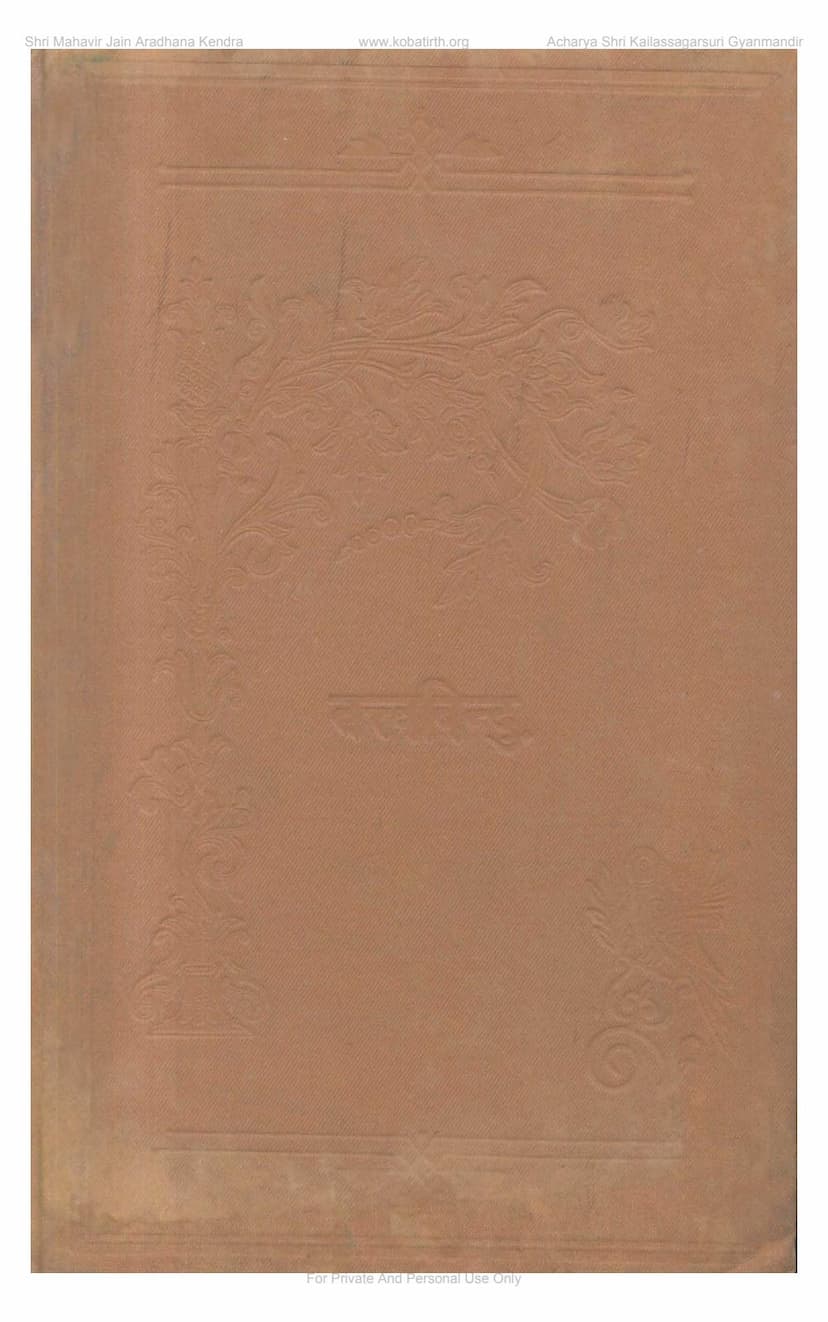Tattva Bindu
Added to library: September 2, 2025

Summary
Here's a comprehensive summary of the Jain text "Tattva Bindu" by Buddhisagar, based on the provided pages:
Book Title: Tattva Bindu (तत्त्वबिन्दु) Author: Munishri Buddhisagar (मुनिराज श्री बुद्धिसागरजी) Publisher: Adhyatma Gyan Prasarak Mandal (श्री अध्यात्मज्ञानप्रसारक मन्मल) Date of Publication: Veer Samvat 2436 (V.S. 2436), i.e., 1910 CE.
Overview:
"Tattva Bindu" (meaning "Droplets of Truth" or "Essence of Principles") is a compilation of essential Jain principles and concepts presented in a concise, point-wise manner. Authored by the respected Jain monk Munishri Buddhisagar, the book aims to distill the profound teachings of Jainism, as expounded by Lord Mahavir and subsequent āchāryas, into easily digestible "droplets" of wisdom. The author draws upon various authoritative Jain scriptures and texts to explain various spiritual and philosophical tenets.
Key Themes and Concepts:
The book covers a vast range of topics central to Jain philosophy and practice, touching upon:
-
The Nature of Reality (Tattvas): The text delves into the fundamental Jain principles (Tattvas) such as Jiva (soul), Ajiva (non-soul), Pudgala (matter), Dharma (medium of motion), Adharma (medium of rest), Akasha (space), and Kala (time). It explains their characteristics, interactions, and roles in the cycle of existence.
-
Karma Doctrine: A significant portion of the book is dedicated to explaining the intricate workings of karma, its types (dravyakarma, bhavakarma, nokarma), its bondage (bandh), its modification (sankrama, udvartana, apavartana), its fruition (uday), its suppression (upashamana), its destruction (kshaya), and the processes of its shedding (nirjara). It details how karma influences the soul's transmigration through various states of existence.
-
Spiritual Path and Practice: The book outlines the path to liberation (moksha) through the combined practice of Right Faith (Samyak Darshan), Right Knowledge (Samyak Gyan), and Right Conduct (Samyak Charitra). It elaborates on the stages of spiritual progress (gunasthanas) and the disciplines required at each stage.
-
Knowledge and Perception: "Tattva Bindu" discusses the different types of knowledge in Jainism, including Mati Gyan (sensory knowledge), Shruta Gyan (scriptural knowledge), Avadhi Gyan (clairvoyance), Manahparyav Gyan (telepathy), and Keval Gyan (omniscience). It explains their scope, limitations, and how they are acquired.
-
The Soul (Jiva): The nature of the soul, its inherent qualities, and its journey through different forms of existence are explored. The text emphasizes the soul's potential for liberation and the means to achieve it by overcoming karmic obstructions.
-
Ethical Principles and Conduct: The book touches upon core Jain ethical principles like Ahimsa (non-violence) in thought, word, and deed, truthfulness, non-stealing, chastity, and non-possession. It also discusses vows (vratas), the importance of good company (satsang), and the avoidance of negative associations.
-
Cosmology and Metaphysics: Various aspects of the Jain universe are described, including different realms of existence (heavenly beings, hellish beings, humans, and animals), the structure of the cosmos, and the nature of time and space.
-
Yoga and Meditation: The text highlights the importance of yoga and meditation in spiritual practice, detailing various types of meditation (dhyana) and their role in purifying the mind and overcoming attachments.
-
Saptabhangi Naya (Seven-Fold Predication): The book explains the syadvada philosophy and the sevenfold logic (syād asti, syād nāsti, etc.) used to understand the multi-faceted nature of reality, emphasizing that a single entity can be viewed from multiple perspectives.
-
Siddhanta References: The author frequently cites other important Jain texts like Sammati Tark, Visheshavashyak, Tattvartha Sutra Vrutti, Panvana Sutra, Bhagavati Sutra, Vichar Bindu, and Prashnottar Shardashatak, providing evidence and grounding for the presented principles.
-
Inspiration for Spiritual Pursuit: The book aims to inspire readers towards spiritual progress by clarifying complex concepts, emphasizing the impermanence of worldly pleasures, and highlighting the ultimate goal of achieving liberation.
Structure and Style:
The "Tattva Bindu" is presented as a collection of numbered points, each elucidating a specific principle or concept. This format makes the vast subject matter accessible and allows for focused study of individual points. The language, though rooted in Gujarati, is geared towards explaining complex philosophical ideas clearly. The author's dedication to making these profound truths understandable is evident throughout the text.
Overall Significance:
"Tattva Bindu" serves as a valuable resource for Jain students and practitioners seeking to understand the core tenets of their faith in a systematic and comprehensive manner. It acts as a guide to the spiritual path, providing philosophical clarity and practical guidance for a virtuous life and ultimate liberation. The book reflects the author's deep scholarship and his commitment to disseminating the wisdom of Jainism.